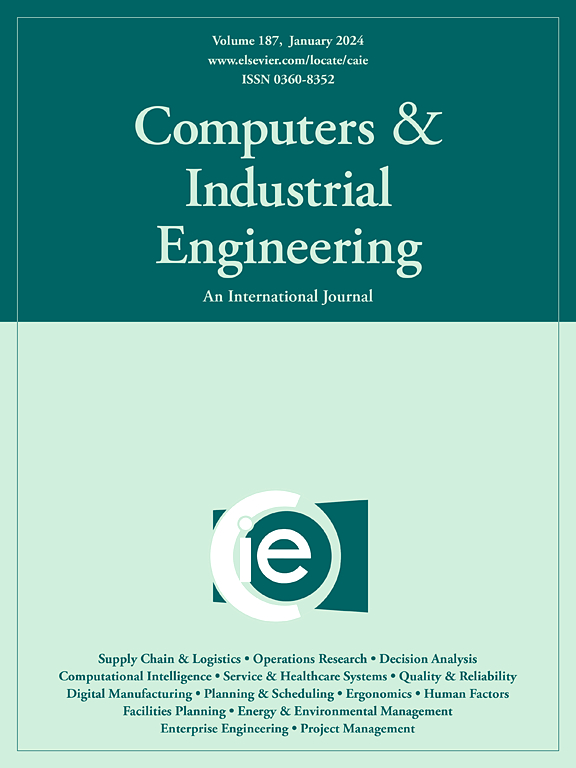Optimizing renewable energy integration using advanced mathematical modeling with storage and emission constraints for resilient and sustainable energy systems
IF 6.5
1区 工程技术
Q1 COMPUTER SCIENCE, INTERDISCIPLINARY APPLICATIONS
引用次数: 0
Abstract
This study presents a stochastic optimization framework for the integration of renewable energy sources into modern power systems, aiming to address key challenges associated with variability in generation, demand uncertainty, and environmental constraints. The model simultaneously incorporates renewable and non-renewable generation, energy storage dynamics, and probabilistic resilience metrics to ensure system reliability, economic efficiency, and emission compliance. It employs a set of coupled energy balance equations, emission constraints, curtailment control strategies, and stochastic demand–supply interactions modeled via Beta and normal distributions. Applied to a rural Indian energy scenario, the model demonstrates a significant improvement over conventional configurations. Specifically, the optimized case with both storage and emission constraints yields a cost reduction of approximately 26%, a curtailment decrease of over 60%, and improved system resilience and reliability levels approaching 98%. These improvements validate the model’s effectiveness in mitigating renewable intermittency, reducing operational inefficiencies, and supporting decarbonization targets. Socially, the model contributes to enhancing energy access and stability in underserved regions by optimizing resource allocation under real-world uncertainties. Practically, the framework provides a scalable and adaptable tool for policymakers, planners, and utility operators seeking to develop low-carbon, cost-effective, and resilient energy infrastructures. By bridging theoretical modeling with practical system design, the proposed approach offers a valuable decision-support mechanism for transitioning to sustainable energy systems aligned with global climate commitments.
利用具有存储和排放约束的先进数学模型优化弹性和可持续能源系统的可再生能源整合
本研究提出了一个将可再生能源整合到现代电力系统的随机优化框架,旨在解决与发电变异性、需求不确定性和环境约束相关的关键挑战。该模型同时结合了可再生和不可再生发电、储能动态和概率弹性指标,以确保系统可靠性、经济效率和排放合规性。它采用了一组耦合的能量平衡方程、排放约束、削减控制策略以及通过Beta和正态分布建模的随机供需相互作用。将该模型应用于印度农村能源情景,与传统配置相比,该模型显示出显著的改进。具体来说,在存储和排放都有限制的优化情况下,成本降低了约26%,弃电减少了60%以上,系统的弹性和可靠性提高了近98%。这些改进验证了该模型在缓解可再生能源间歇性、减少运营效率低下和支持脱碳目标方面的有效性。在社会方面,该模型通过优化现实世界不确定性下的资源配置,有助于提高服务不足地区的能源可及性和稳定性。实际上,该框架为寻求发展低碳、低成本和弹性能源基础设施的政策制定者、规划者和公用事业运营商提供了可扩展和适应性强的工具。通过将理论建模与实际系统设计相结合,所提出的方法为向符合全球气候承诺的可持续能源系统过渡提供了有价值的决策支持机制。
本文章由计算机程序翻译,如有差异,请以英文原文为准。
求助全文
约1分钟内获得全文
求助全文
来源期刊

Computers & Industrial Engineering
工程技术-工程:工业
CiteScore
12.70
自引率
12.70%
发文量
794
审稿时长
10.6 months
期刊介绍:
Computers & Industrial Engineering (CAIE) is dedicated to researchers, educators, and practitioners in industrial engineering and related fields. Pioneering the integration of computers in research, education, and practice, industrial engineering has evolved to make computers and electronic communication integral to its domain. CAIE publishes original contributions focusing on the development of novel computerized methodologies to address industrial engineering problems. It also highlights the applications of these methodologies to issues within the broader industrial engineering and associated communities. The journal actively encourages submissions that push the boundaries of fundamental theories and concepts in industrial engineering techniques.
 求助内容:
求助内容: 应助结果提醒方式:
应助结果提醒方式:


